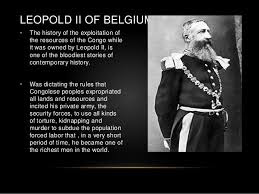BLACK IRAN:
The Forgotten Legacy of Enslaved
Africans in Persia Is Being Resurrected
By: David
Love, January 16, 2016
Although Iran receives attention these
days for a number of things, including the nuclear deal it reached with the
U.S. and other nations, there are other aspects to the nation and its history
that have remained elusive. Take, for instance, the history of Africans in
Iran. Slavery had existed in the country for hundreds of years, and yet
Iranians have not come to terms with their past, if they understand it at all.
Fig. 1 - Slaves who were not
eunuchs were sometimes assigned to the armies of the Qajar elites. The 14
pictured here belonged to Qajar prince Zell-e-Soltan, Ghameshlou, Isfahan,
1904. Photograph: Zell-e-Soltan/Modern Conflict Archive, London, UK
One scholar has amassed a collection
of photographs and texts that provide a narrative of the story of Black
people in Persia, as the Guardian
reports. Anthropologist Pedram Khosronejad, who is the Farzaneh Family
Scholar for Iranian and Persian Gulf Studies at Oklahoma State
University, has devoted his attention to the issue of slavery in Iran since the
late 1990s, after studying the traditional clothing of Afro-Iranians.
The history of Black people in Persia
reaches back to the ninth century, and the Persian Gulf slave trade has ancient
origins. Most Afro-Iranians emerged in Iran through the Indian Ocean slave
trade, which included a trade route between East Africa and the Middle East.
Enslaved Africans worked as soldiers, bodyguards, eunuchs and servants
to households of the wealthy. The enslavement of African people
continued until 1928, when Iran abolished the practice. According to the
Ajam Media Collective, although Afro-Iranians were scattered throughout the
country, many settled in the Southern region bordering the Persian Gulf
following emancipation.
Fig. 2 - In this staged photo
taken by Zell-e Soltan at his summer hunting palace near Isfahan, one of his
enslaved Africans holds his son. According to the caption, the infant (Iqbal)
is the real son of the adult enslaved person, Haji Yaqut Khan, suggesting he
wasn’t a eunuch and could father his own children. The caption says that Yaqut
Khan is in his ethnic clothes (languteh), which was mainly worn by Africans
outside of Iran. Photograph: Zell-e-Soltan/Modern Conflict Archive, London, UK
Haji Firuz—the Santa Claus-type figure
that is an icon of the Persian New Year—is a jovial, red robed, minstrel-type
figure who provides people with holiday wishes. And he is depicted in
blackface and was intended to be a slave. But the topic of slavery in
Iran is an invisible and sensitive one, the Guardian
reports, given the lack of research on the subject.
There are some Qajar families who have
issues with the term ‘slave’,” Khosronejad noted, referring to the ruling
dynasty in Iran from 1794 until 1925. “They say what their families had were
domestic servants and they were not treated as slaves. This might be correct,
but slavery is slavery and we should be able to talk about it openly.”
Khosronejad has collected 400 photos
depicting Afro-Iranian slaves and servants, which he plans to compile into a
book and a series of exhibitions.
Fig. 3 - From the Afro-Iran
series by Mahdi Ehsaei (Copyright: Mahdi Ehsaei)
Meanwhile, Iranian-German photographer
Mahdi Ehsaei has chronicled the lives of Afro-Iranians in the present day
through beautiful photographs of a community that is little known, as Muftah reports.
Ehsaei has published a photo-book called Afro-Iran – a historical and cultural
exploration of the African presence in Iran. The photographer
reflected on his project: The Hormozgan province in the Persian Gulf is a
traditional and historical region with a diverse and unexplored population. It
is framed with unique landscapes and people with profound personalities.
Iranians, who still have African blood in them and continue their African
heritage with their clothing style, their music, their dance and their oral
traditions and rituals.
The resulting portraits reveal new
facets and unfamiliar faces, which are not typical for the common picture of
Iran. They show details documenting the centuries-long history of this ethnic
minority. A confrontation between the Persian culture and the, for Iran
unusual, African consciousness.
Fig. 4 - From the Afro-Iran
series by Mahdi Ehsaei (Copyright: Mahdi Ehsaei)
Efforts to unlock the history and
present realities of Black people in Iran will hopefully lead to a greater
understanding of this often-neglected and forgotten minority.






Comentários
Enviar um comentário